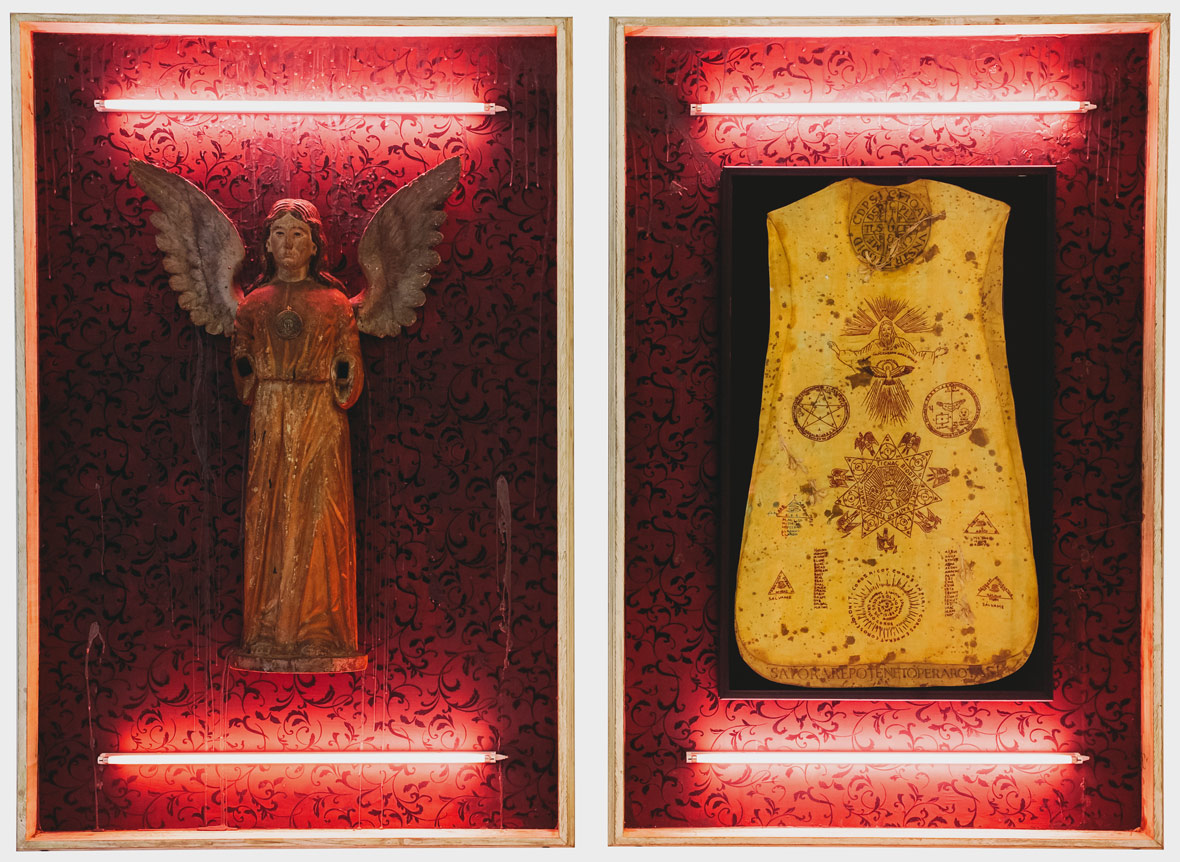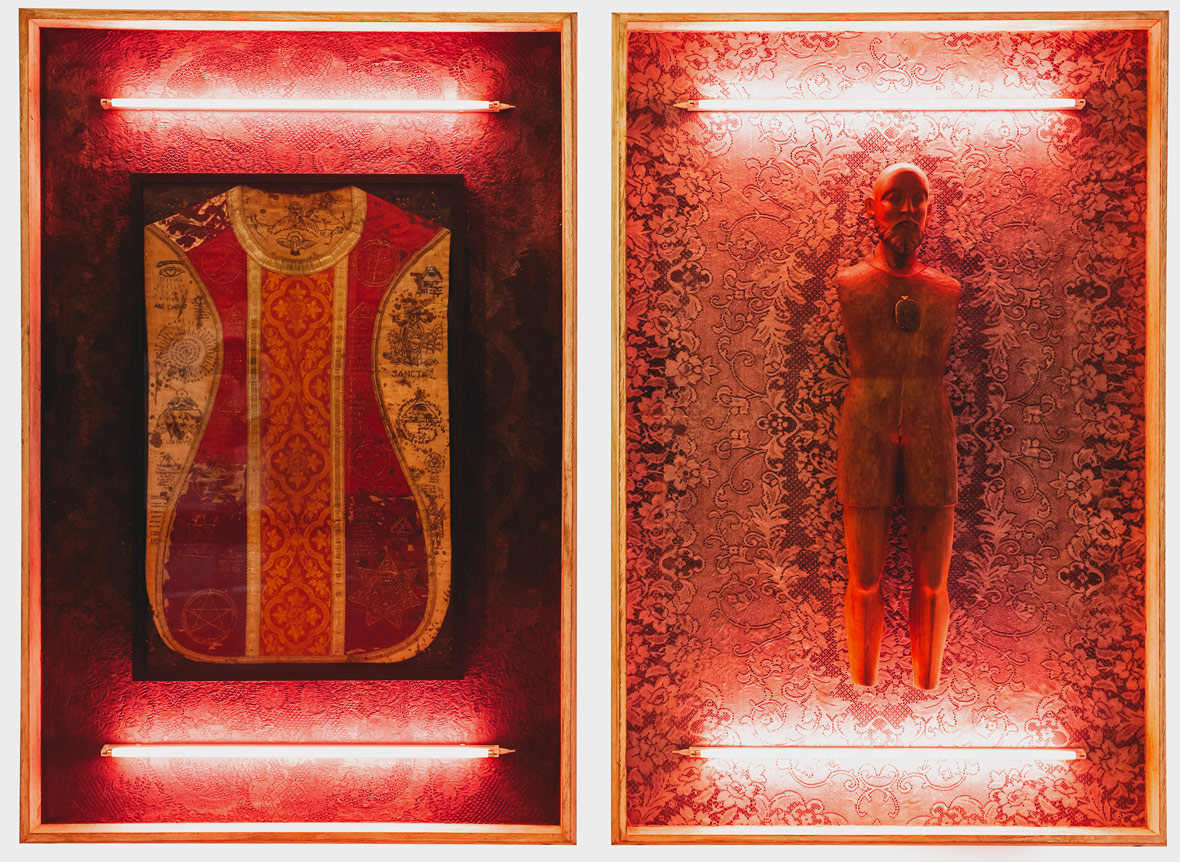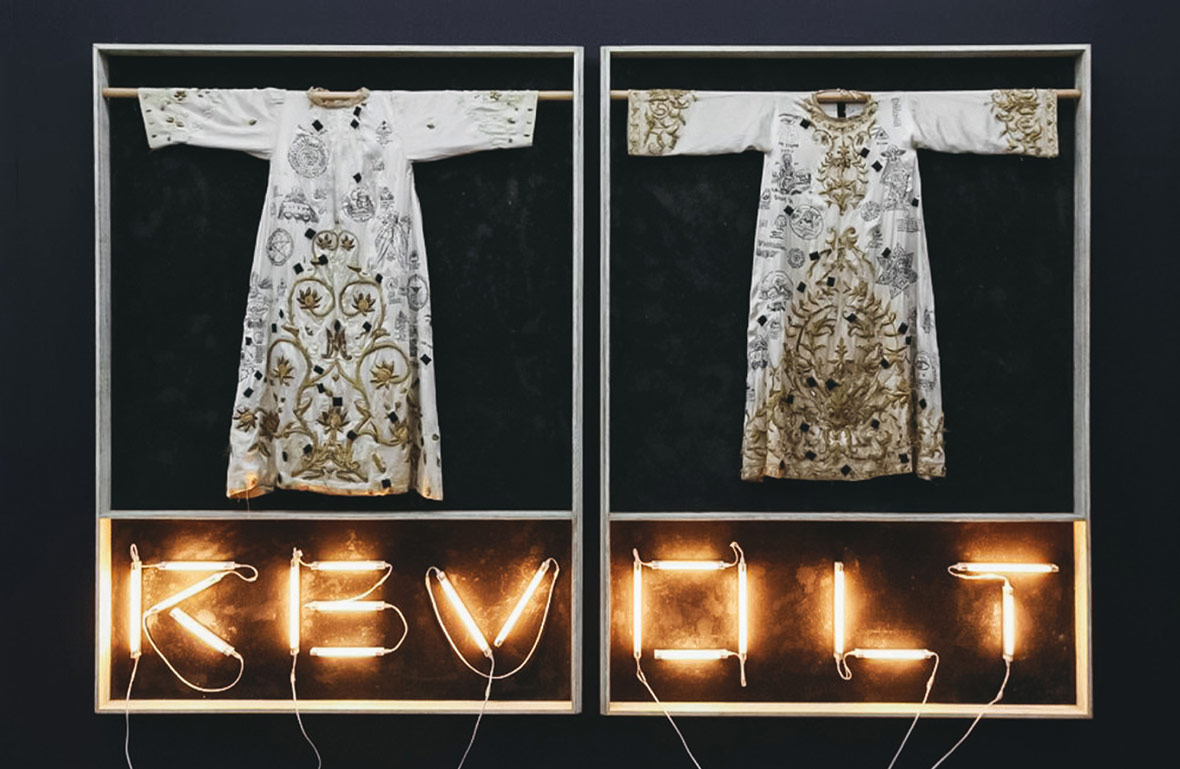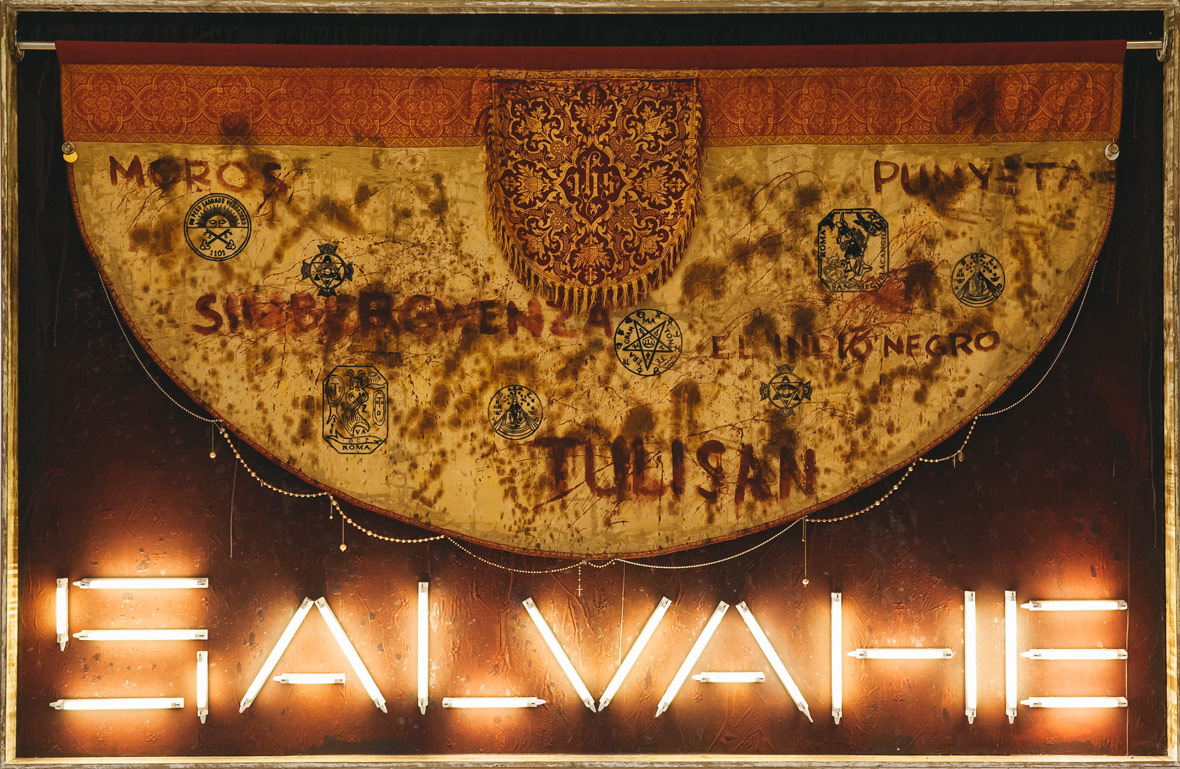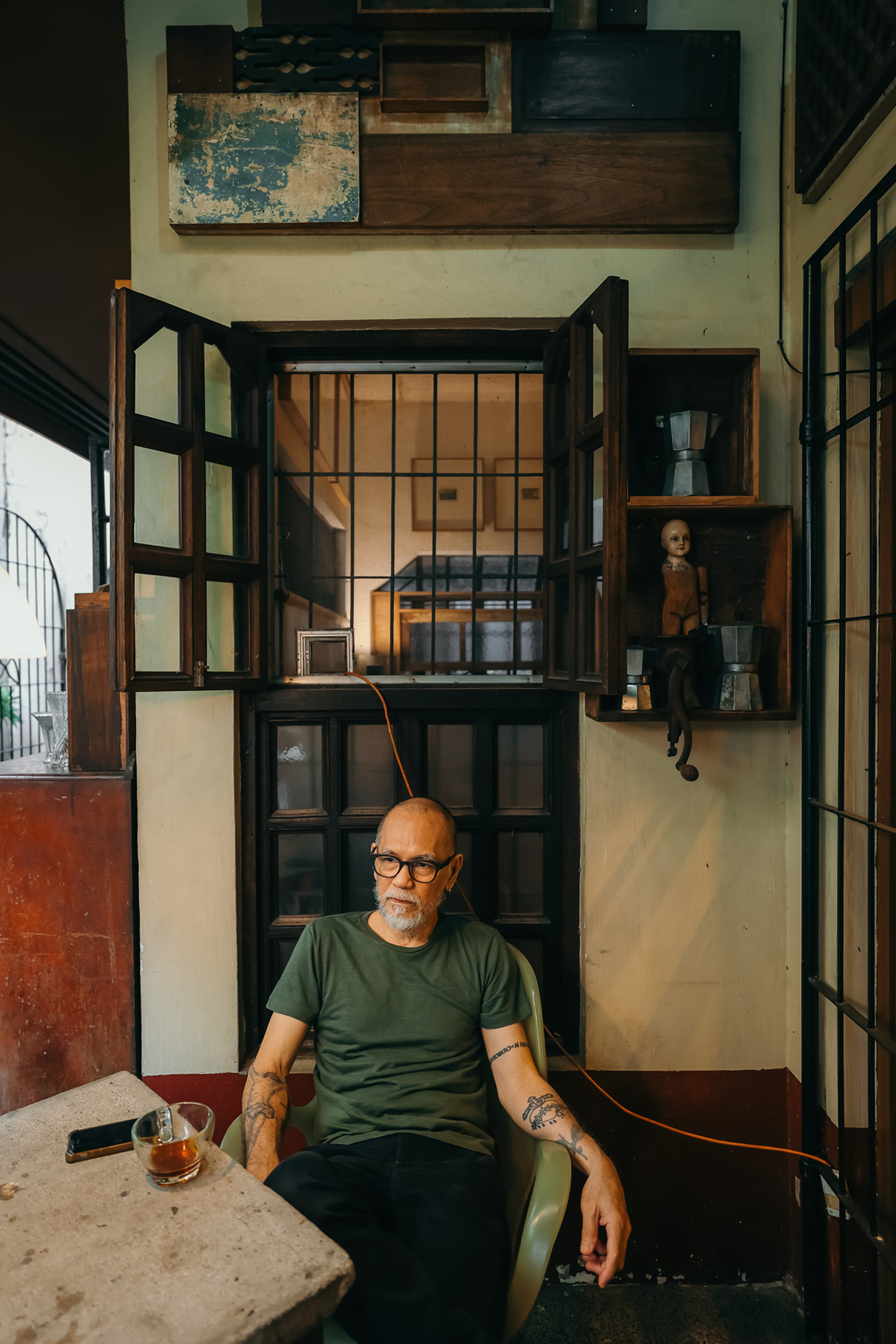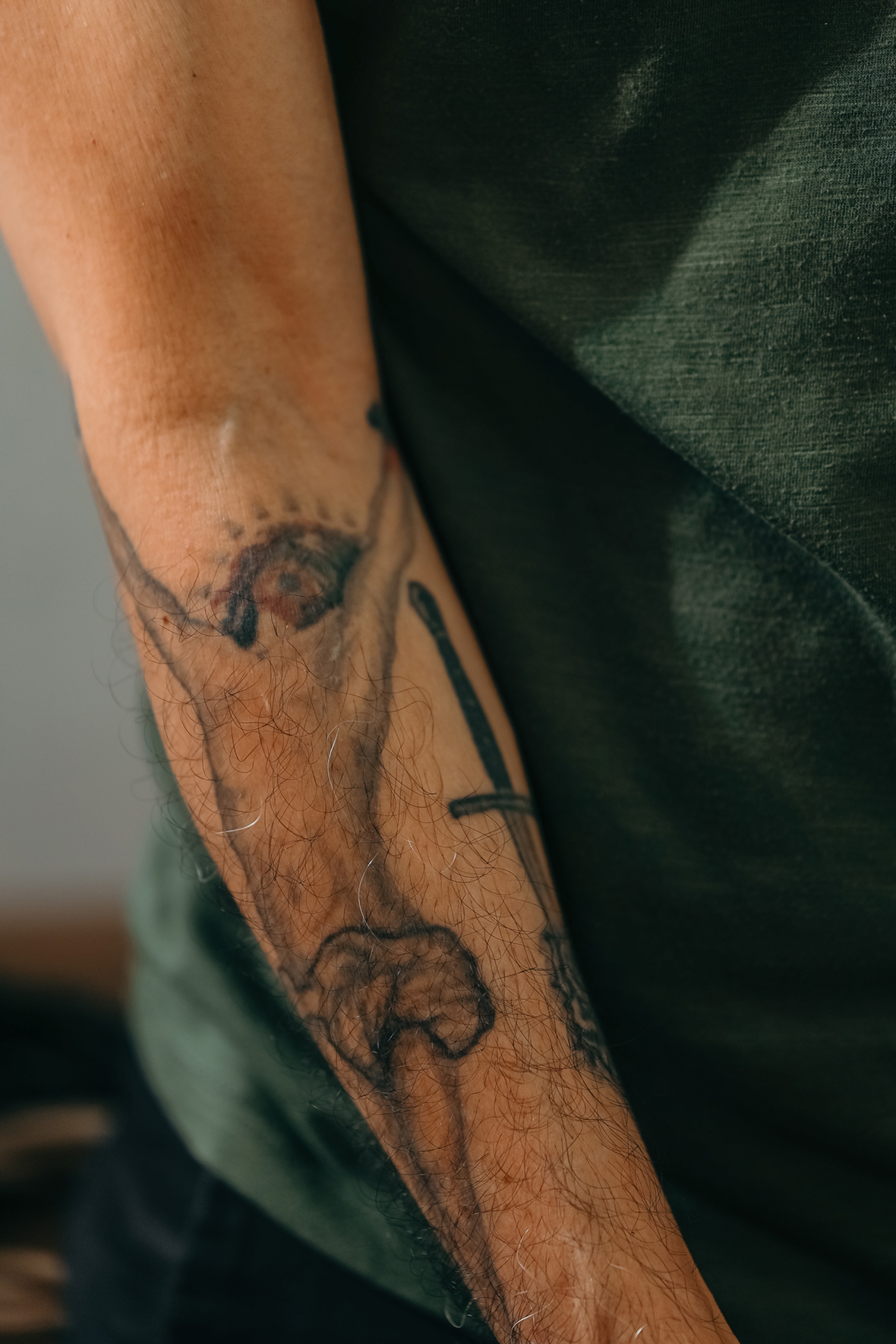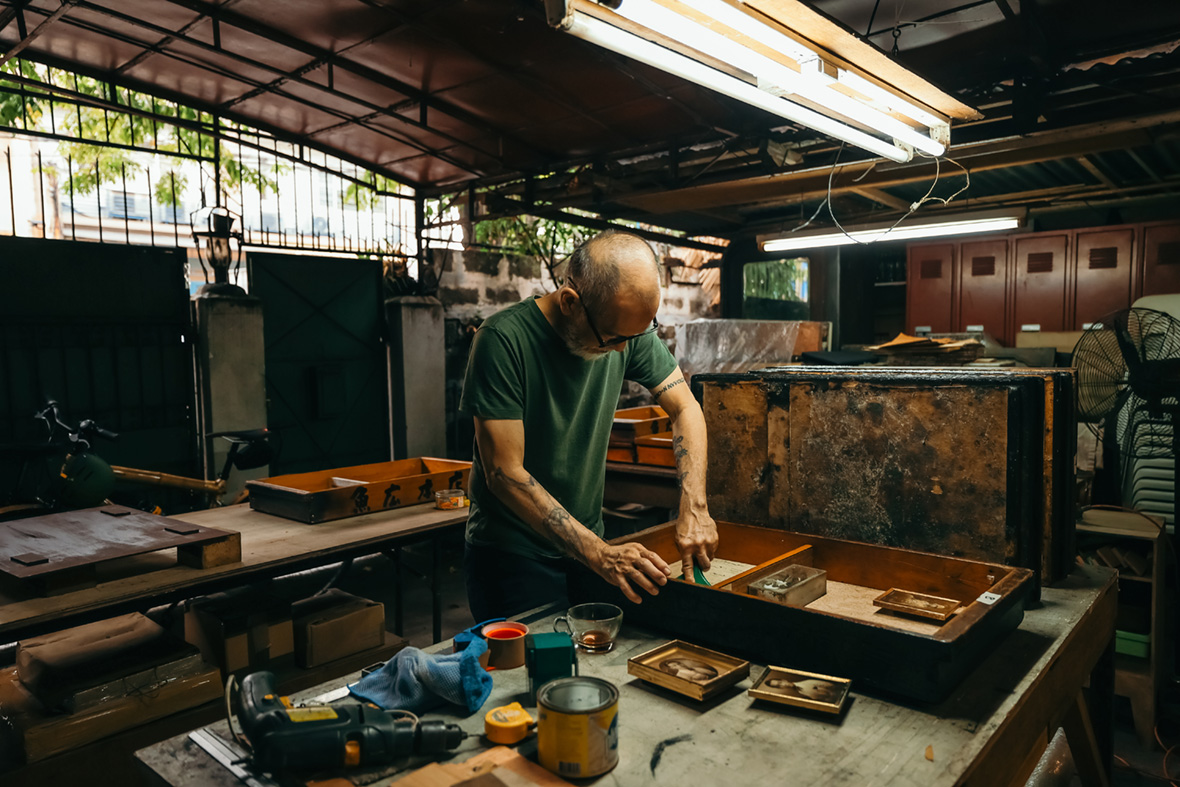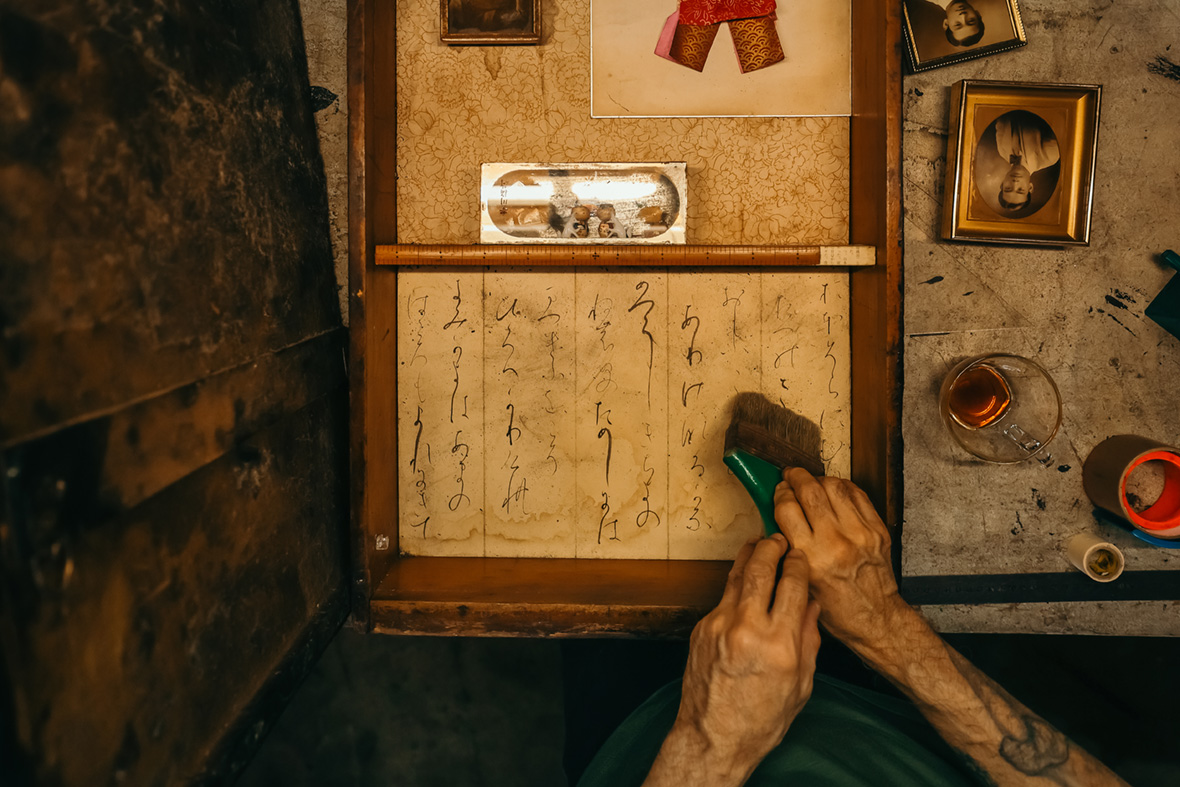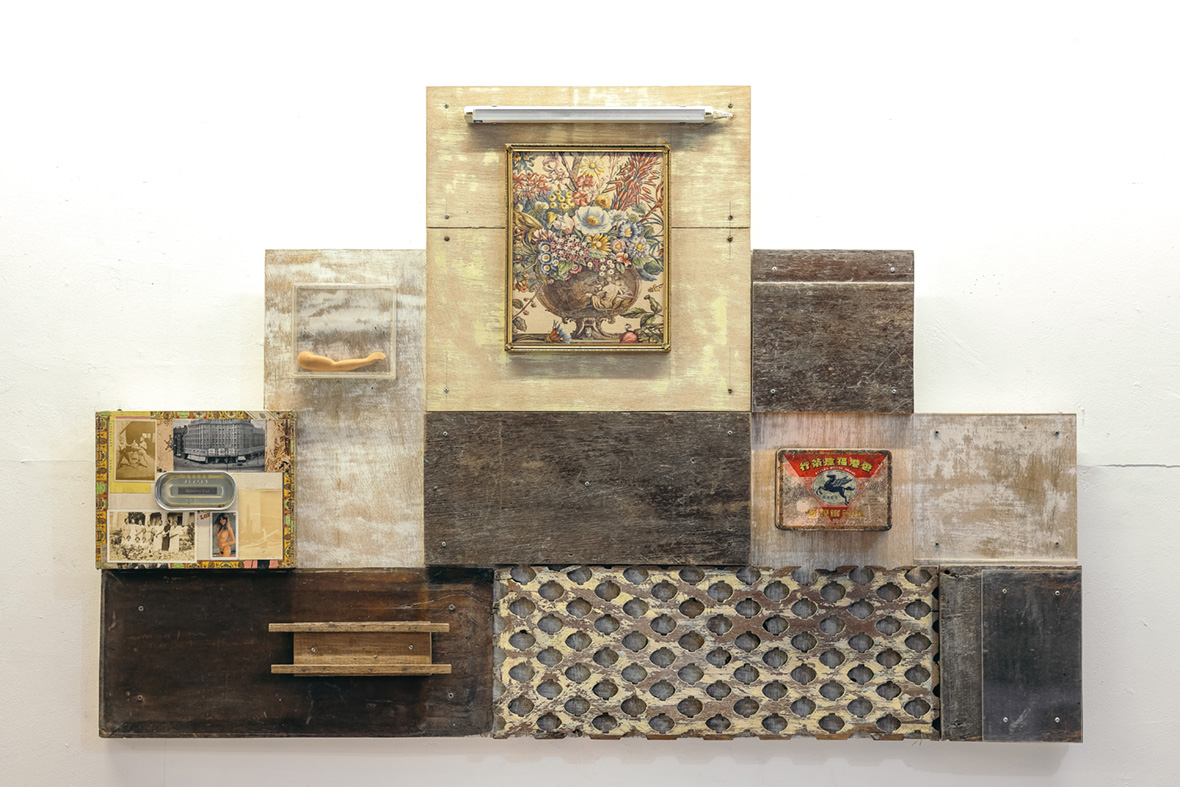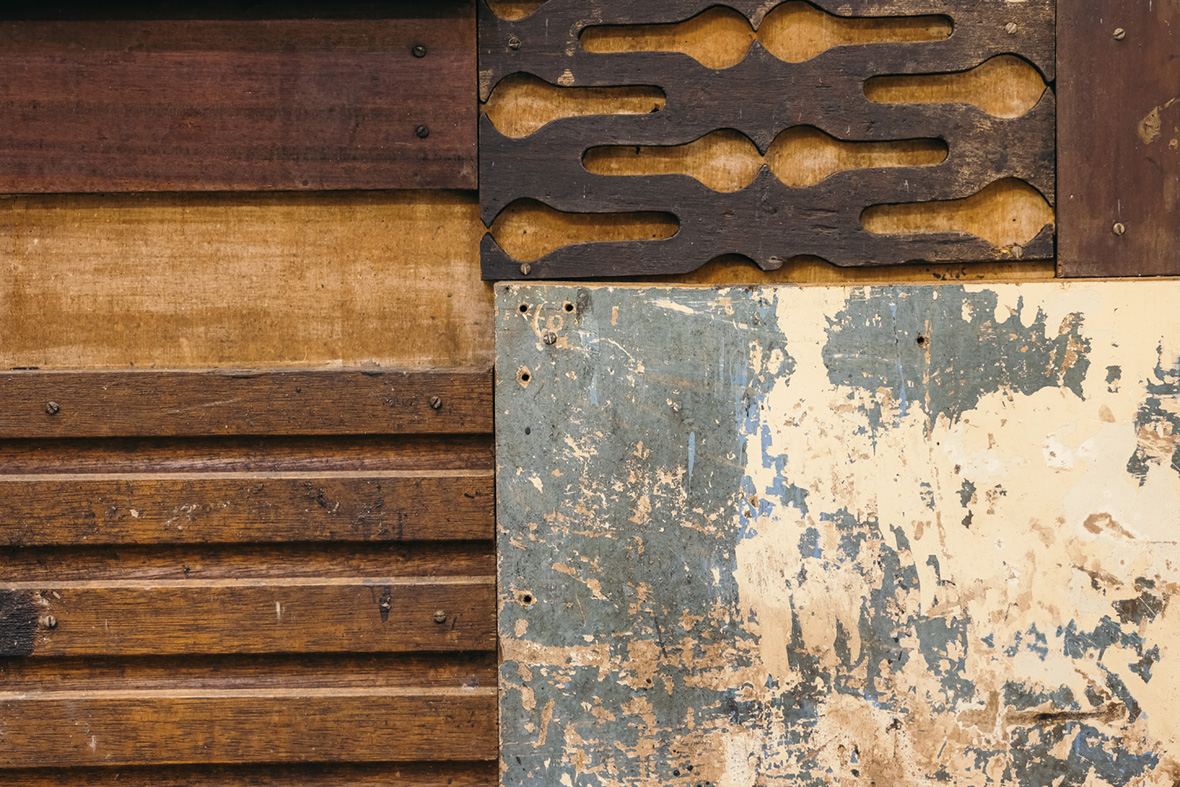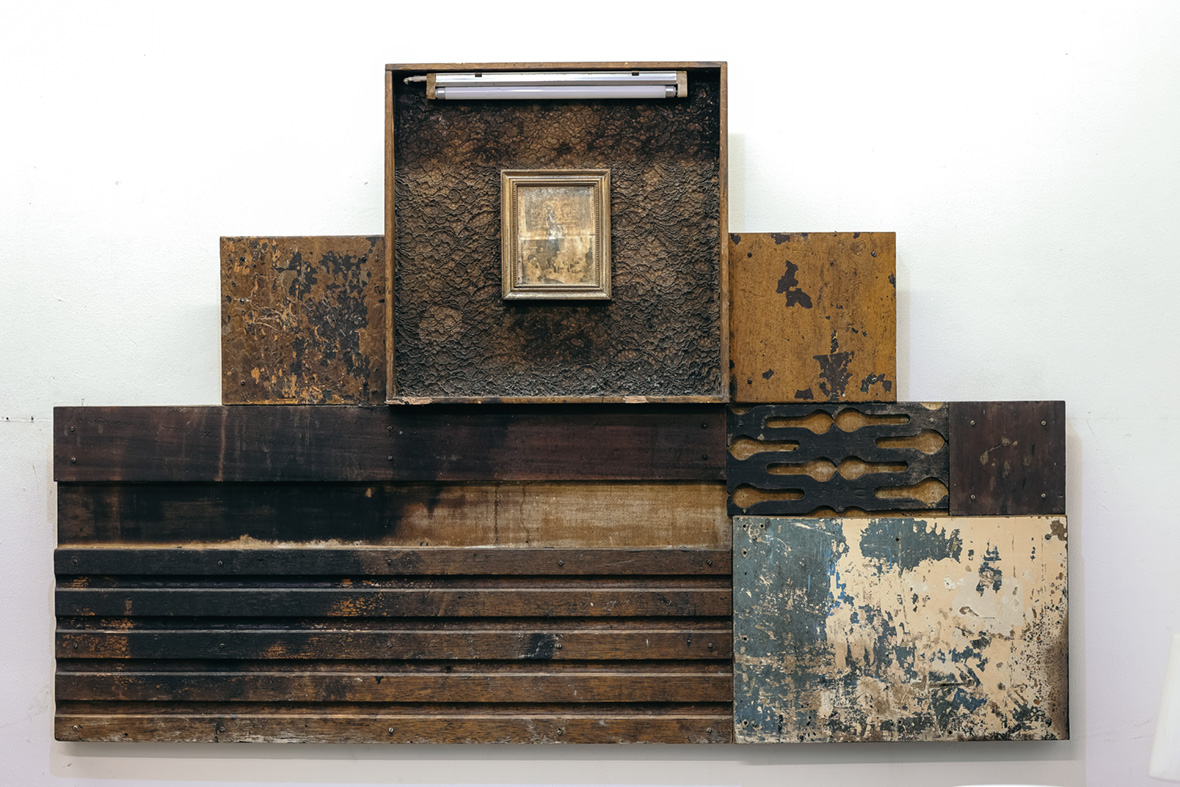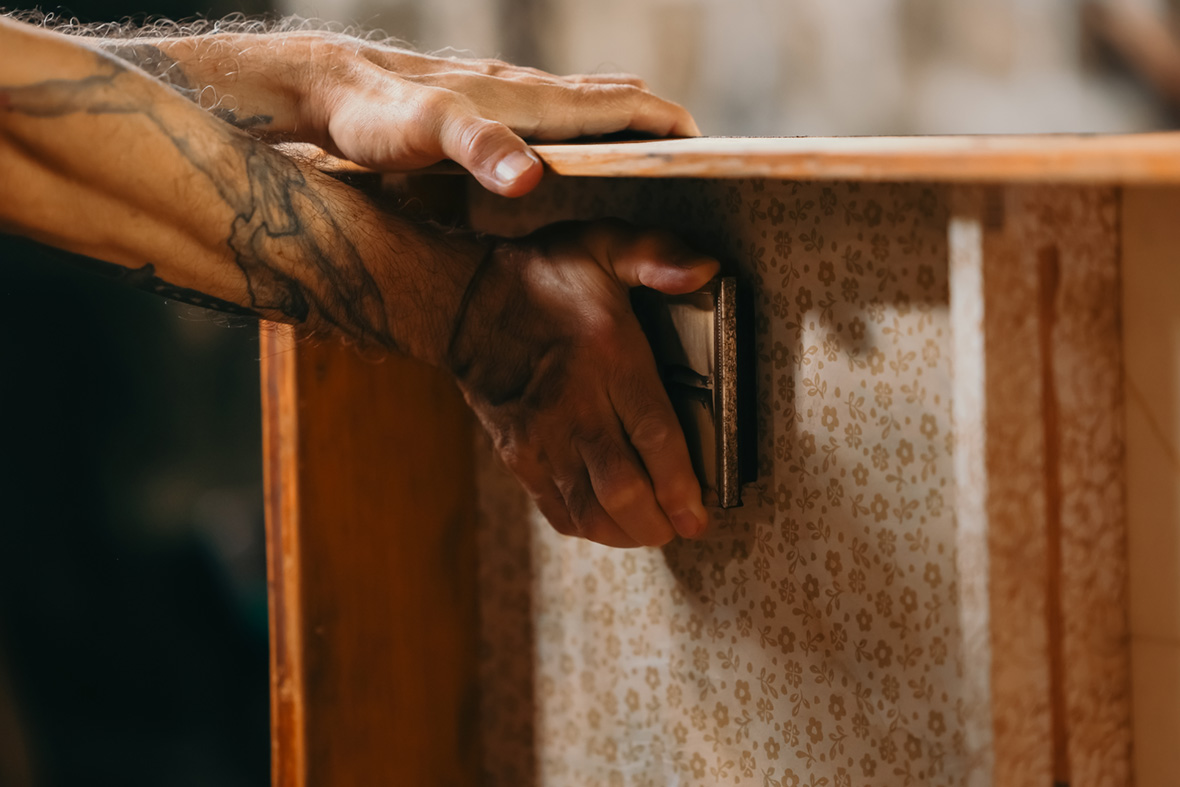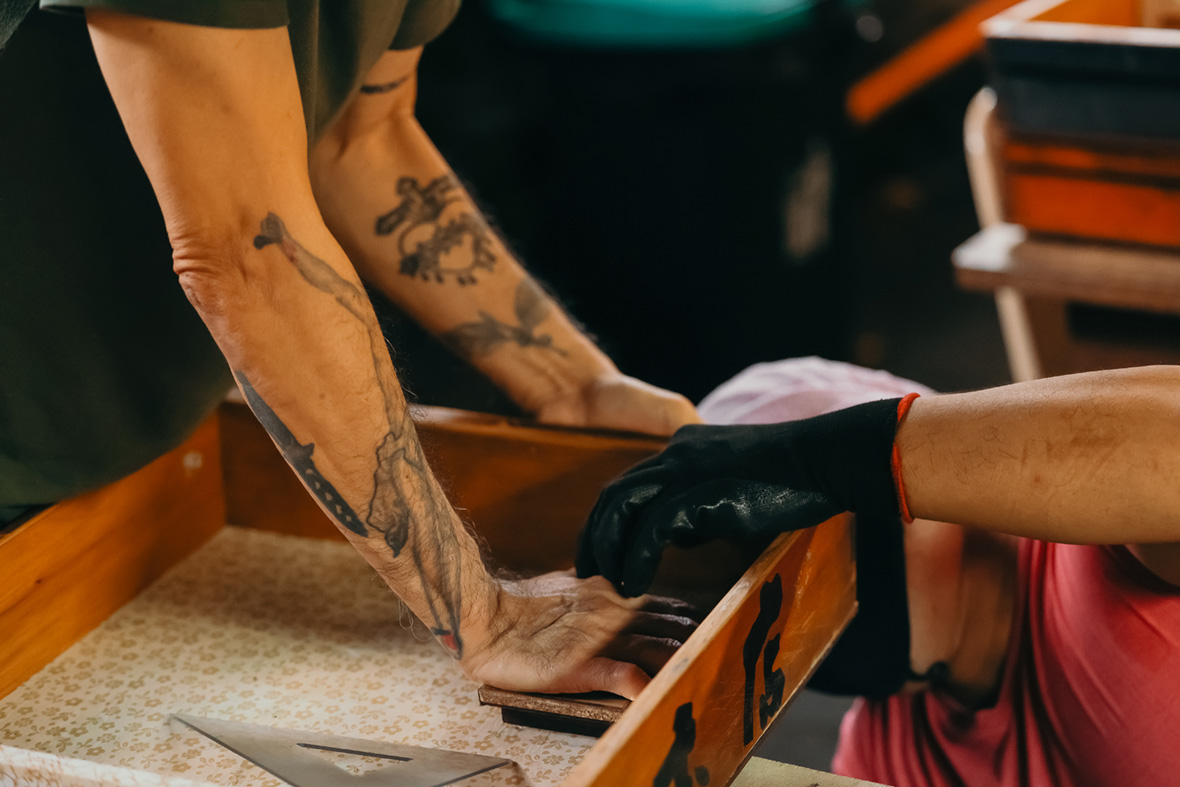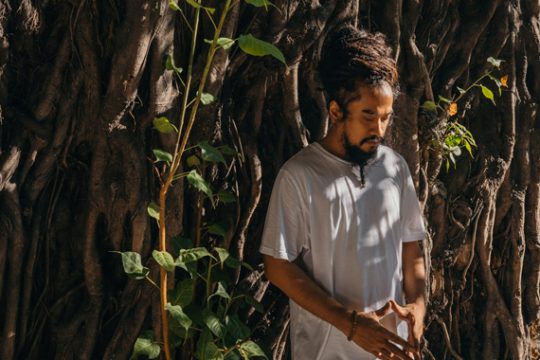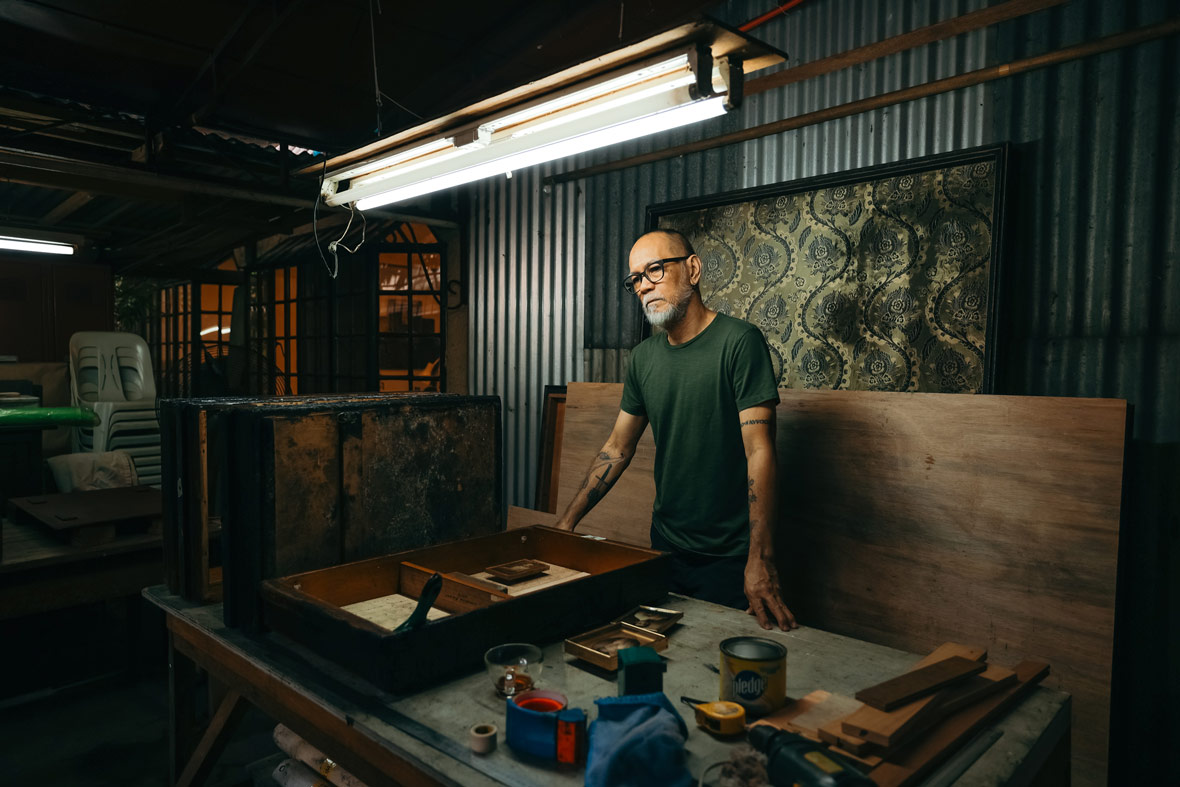
The Catholic church has long understood the power of beauty. The use of ritual, music, art, and design are central parts of their worship. Norberto Roldan also recognizes beauty’s power. The Filipino artist transfers religious vestments and liturgical objects to gallery settings, using them to spark discussion on their meaning and place in the context of a post-colonial society ruled by the church for hundreds of years. These spiritual objects are repurposed in the pursuit of empirical truths.
说起天主教堂对美学力量的领悟,可能要追溯到很久以前。无论仪式、音乐、艺术还是设计,这些都属于天主教崇拜核心的一部分。来自菲律宾的 Norberto Roldan 也同样认知到美的力量。在教会统治数百年的后殖民社会背景之下,这位艺术家将祭服和礼仪用品搬到画廊里,利用这种手法引发关于其意义和地位的讨论。这些具有宗教精神象征的物件,在追寻经验真理的过程中被重新定义。
In one installation, a confessional is outfitted with a wooden saint statue in a glass case, a goat skull, and a bottle of pampa regla, which is an illegal abortion cocktail used in the Philippines, where abortion in any form is illegal. In another pair of pieces, twin cases hold vestments and are outfitted with warm neon lights that spell out the words “salvation” and “heretic” in Tagalog. “The church has long used rituals and objects to conquer people; this is my way of reverting that power back to the people,” Roldan explains. “I’m giving the church a taste of their own medicine. If you’ve used this against us, maybe we can use it against you.”
他的一件装置作品,用一间告解室放有一个装在玻璃盒里的木制圣像、一具山羊头骨和一瓶“人流用鸡尾酒”(pampa regla)——这是一种当地人会使用的非法堕胎酒饮,因为在菲律宾,任何形式的堕胎都是不合法的。在另一件作品中,成对的箱子里装有祭衣,并打上塔加洛语的“救赎”和“异端”两个词语的温暖霓虹灯光。“教会长期以来用仪式和物品来让人民臣服,这是我将权力返还人民的方式。”罗丹解释道:“以其人之道还治其人之身。如果你用此对付我们,也许我也可以用此对付你。”
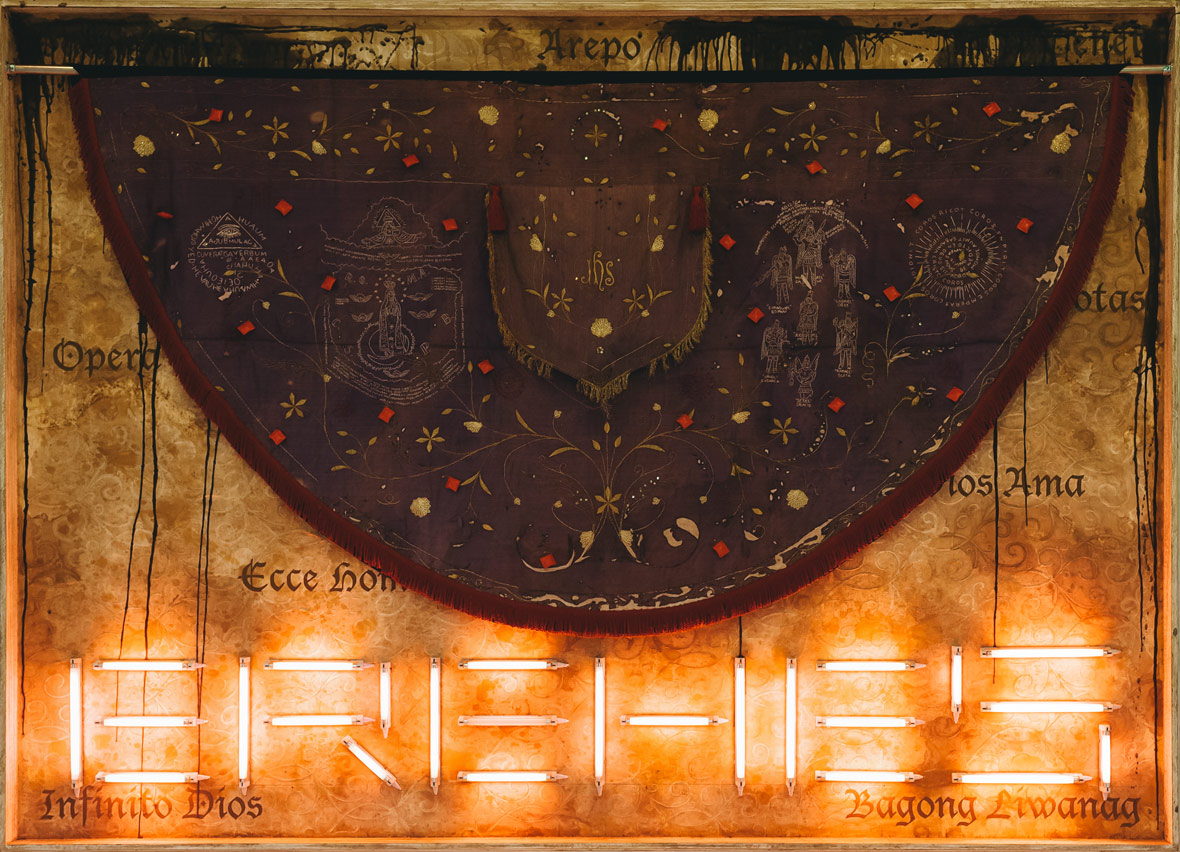
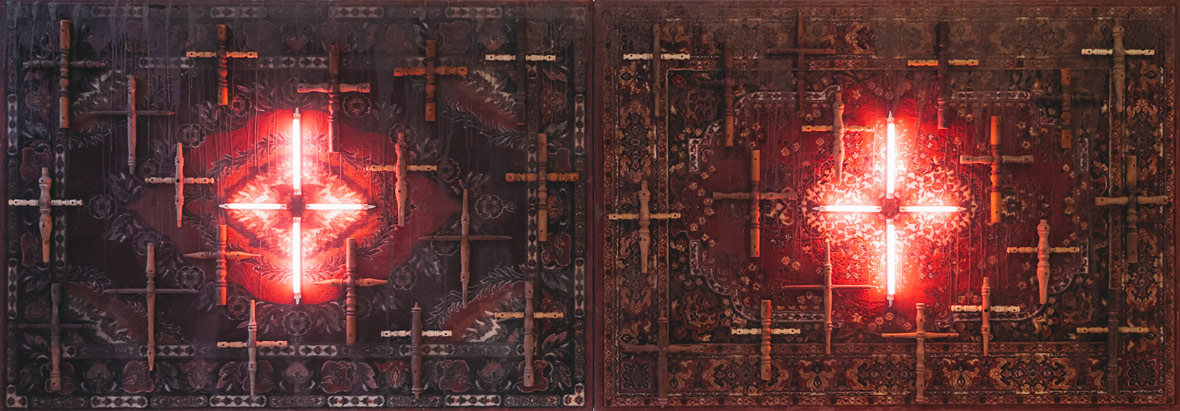
Roldan has thought deeply about power imbalances and religion in his many former lives over the 67 years he’s been around. He studied in a seminary for eight years beginning at 11 years old, ultimately deciding against priesthood. He also helped run a farm that his wife inherited, where he was exposed to labor and land rights issues. As a result of this hands-on education, he dedicated the next part of his life to leftist activist movements during the late period of martial law in the 1980s, necessitating a self-exile in Australia for a couple of years.
在过往 67 年中,罗丹始终在深思权力失衡和宗教议题。他从 11 岁开始在神学院学习了 8 年,最终决定不当神父。他帮助妻子经营一个继承下来的农场,在那里直面了劳工和土地权利争议。受到这种际遇的影响,他将下半生献给了1980年代戒严后期的左派激进主义运动,还因此必须在澳大利亚自我流放好几年。
Although he still identifies as Catholic, Roldan no longer practices. He argues that criticism of the church is different from attacking it. “Even the pope has been critical of the Catholic church,” he says. “If you realize that poor people here have been conditioned to accept that they were meant to be poor, then religion has done nothing to help them better their lives.”
尽管罗丹仍然认为自己是天主教徒,但他已不再执行教会的义务。他认为批评教会与抨击教会是不一样的。“即使是教皇也会批评天主教会。”他说,“如果你意识到这里的穷人已经习惯接受自己本应贫穷的现实,而宗教却没有做到任何事来帮助他们改善生活。”
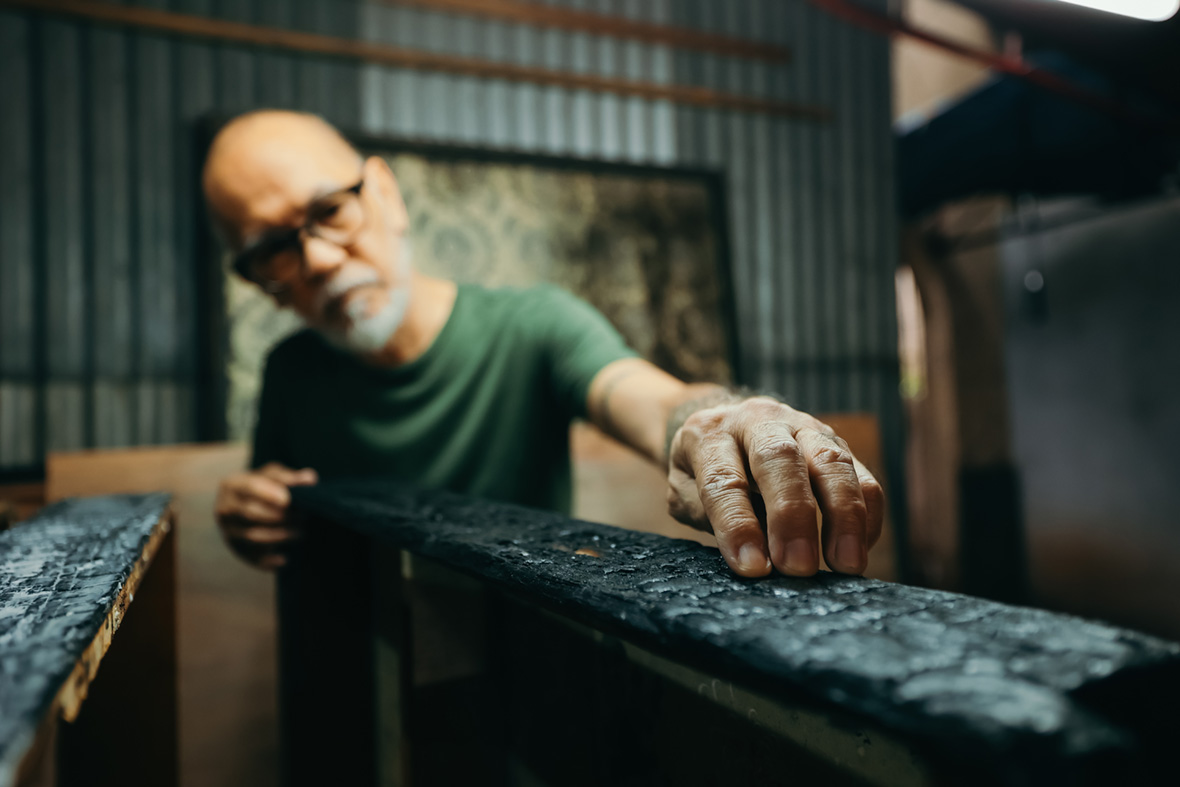
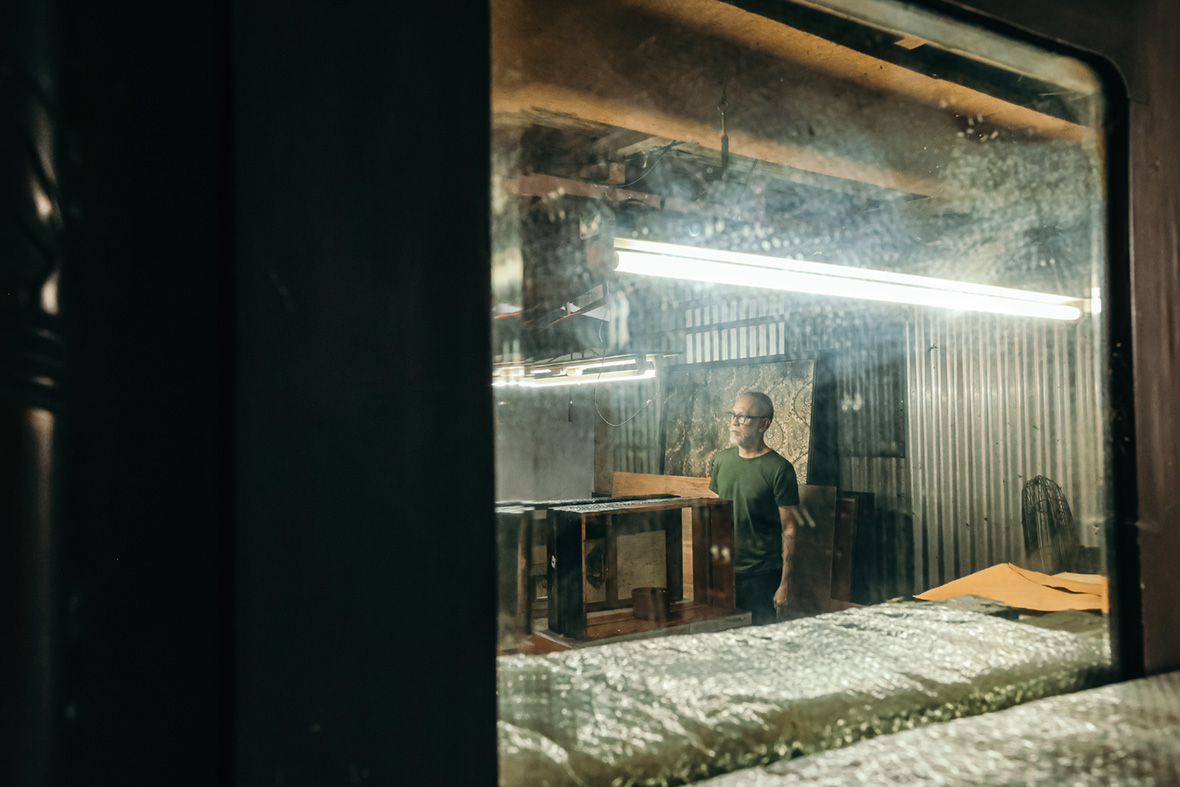
The Philippines was colonized by Spain in the 1500s and was under its control for 300 years. They introduced Catholicism to the country and it was an integral part of maintaining their power structure from the start. Today, around 80 percent of Filipinos are Catholic. But Roldan argues that it’s more complicated than that simple statistic, with many rural Filipinos practicing dual faiths. The animism common among indigenous populations worldwide retains a foothold alongside Catholicism in the Philippines to this day.
菲律宾在十六世纪被西班牙殖民,并受其控制长达 300 年。打从一开始西班牙人就将天主教传入该国,以成为当权者维持权力结构不可或缺的一环。如今,约80%的菲律宾人都信奉天主教。但罗丹认为情况远比单单的统计数字更为复杂,因为有许多菲律宾农村居民都奉行双重信仰。普遍存在于世界各地土著居民的万物有灵论,至今仍与天主教一起在菲律宾稳固立足。
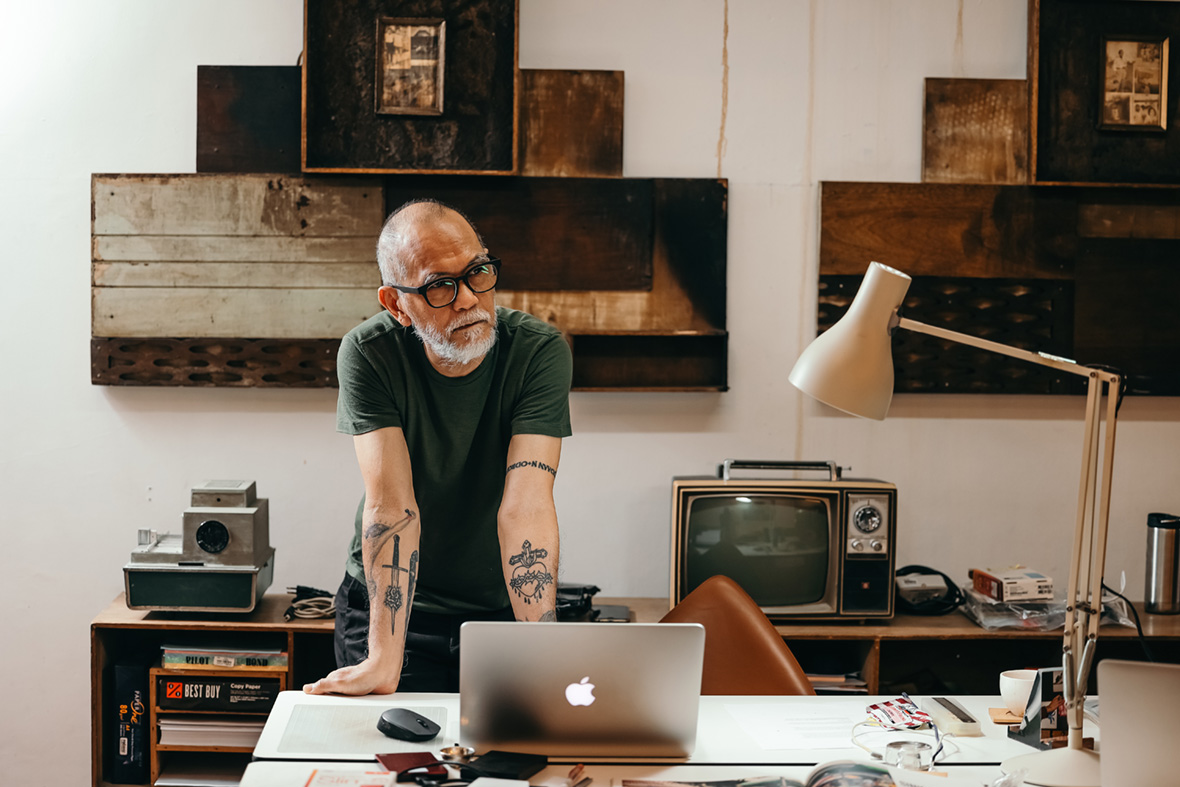
Since he uses actual religious objects in his artwork, Roldan acknowledges there may be ethical concerns in repurposing them. Many of them were inherited from his uncle, who was a priest. Although Roldan never became a priest himself, his family gave him permission to use them. Many of the other objects were sourced from thrift stores, which he cleared out as quickly as possible. “I found a couple of shops with them and bought everything. But how were they able to acquire them? They might have been stolen.”
由于罗丹在艺术作品中使用实际的宗教物品,他也承认挪用它们可能存在伦理问题。其中许多是他从曾经当过神父的叔叔那里继承而来,尽管罗丹本人从未成为神父,但他的家人允许他使用这些物价。其余也有许多来自二手商店,一旦发现这些物品,罗丹便迅速扫光全部。“我找到几家有宗教物品商店,买下了所有东西。但商店是怎么得来的呢?也许是偷的。 ”
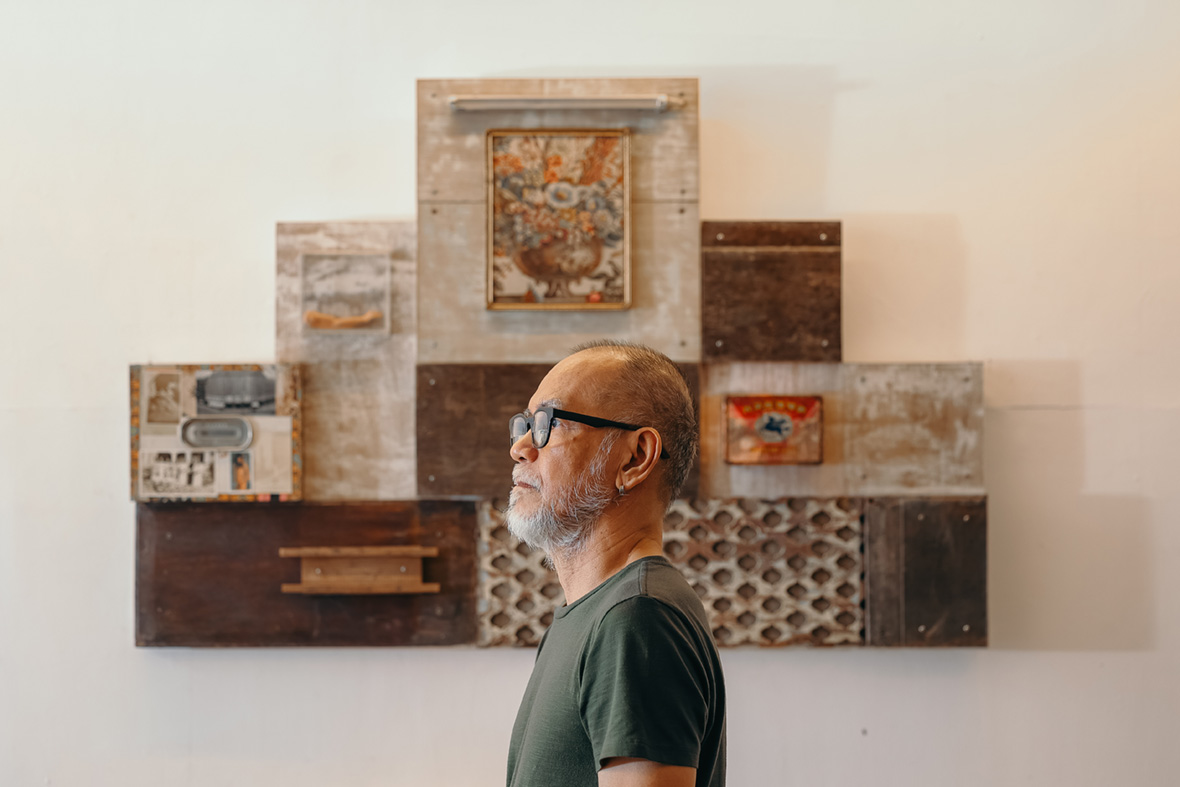
He says that these objects of worship are inherently beautiful, which loans them a lot of their power, so only minimal alterations are required. “All of them were imported from Italy and they’re not being manufactured anymore; you don’t need to do anything to make them more beautiful,” he says. “But you need to change the context to subvert the original purpose of the object and make it your own. I’m very, very careful not to bastardize them.”
他说这些宗教供奉物品本身就很美丽,承载了很大的神力,因此只需要再稍作改动即可。“所有物件都是从意大利进口,且现在已经绝版了,你不需要多做任何事将它们变得更美了。”他说,“但你必须改变这些物品的语言场域,颠覆它们原始的用意、并将其纳入自己的语境里。我非常非常谨慎以让它们不被误用。”
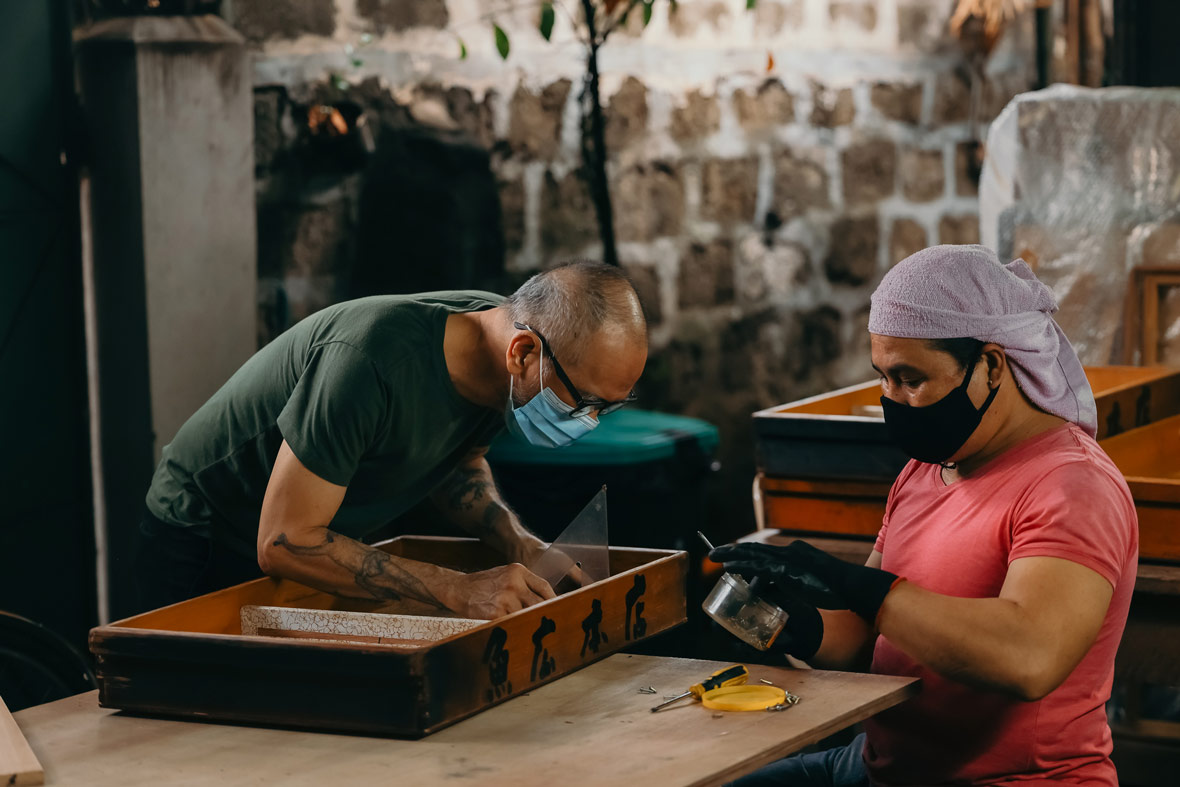
Roldan’s artwork doesn’t stop at criticisms of the church. He often denounces the American colonization of the Philippines, which lasted for a century, ending with World War II. Most of the country’s institutions are modeled on American ones. In Crazy Horse and White Love, he highlights historical violence against Filipinos by Americans and questions its continued pursuit of military dominance beyond its borders. As the world enters a new age with new global powers and tensions, Roldan plans on addressing them as they unfold: “It’s the artist’s responsibility to be a part of society,” he says. “We’re not here just to create art but also to provide help to the less fortunate. If you work in isolation, what good is that? What is your art for? What are you for?”
罗丹的艺术作品没有止步于对教会的批评,他也经常谴责美国对于菲律宾持续一个世纪、直到第二次世界大战才结束的殖民统治,菲律宾多数建设机构都是以美国为蓝本。在《Crazy Horse and White Love》里,他强调了美国人对菲律宾人的历史暴力,并质疑美国在超越其国界的地方不断寻求军事主导的野心。随着世界进入新时代,全球新势力和紧张局势不断升温发展,罗丹计划在问题揭露的当下就指出:“将自己置身在社会中是艺术家的责任。”他说,“我们不只是为了创造艺术而生,而是为了向那些不幸的人伸出援手。如果你孤立地创作,那有什么好处?你的艺术为何存在?你又为何存在?”
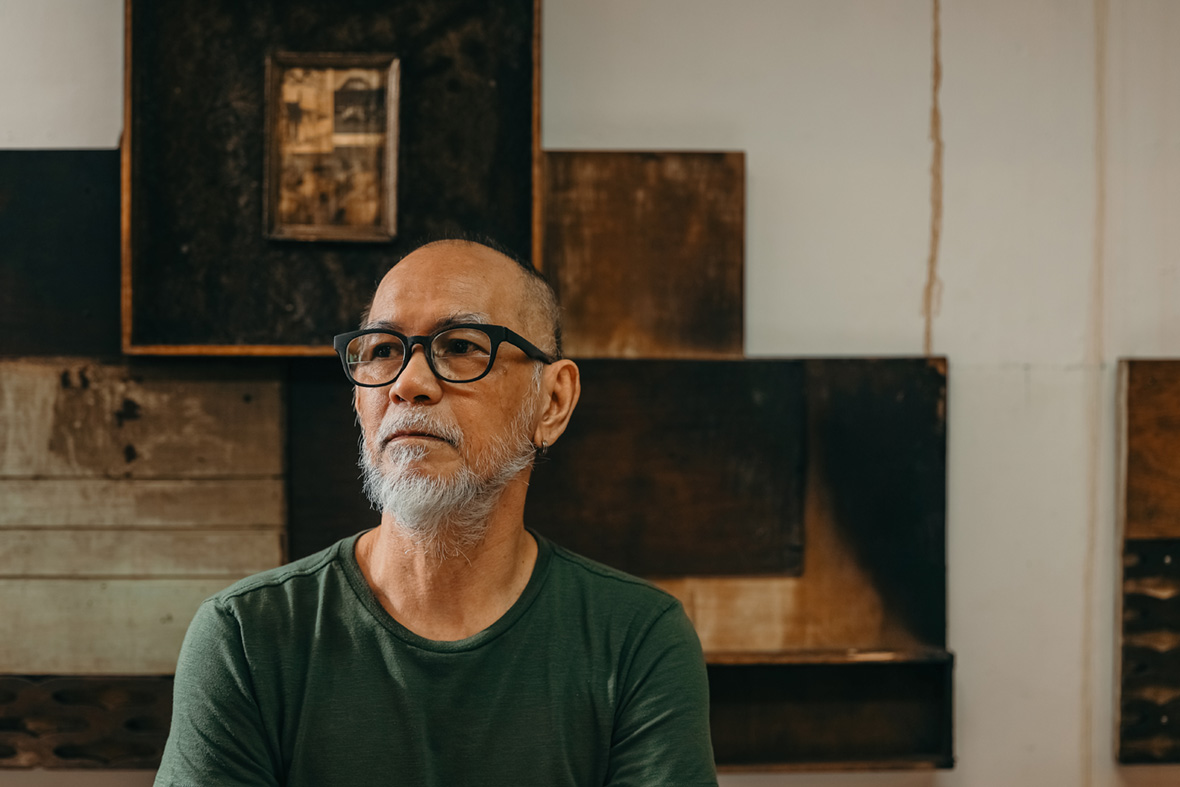
Like our stories? Follow us on Facebook and Instagram.
Contributor: Mike Steyels
Photographer: Jilson Tiu
Chinese Translation: Yang Yixuan
Additional Images Courtesy of Norberto Roldan
供稿人: Mike Steyels
摄影师: Jilson Tiu
英译中: Yang Yixuan
附加图片由 Norberto Roldan 提供

